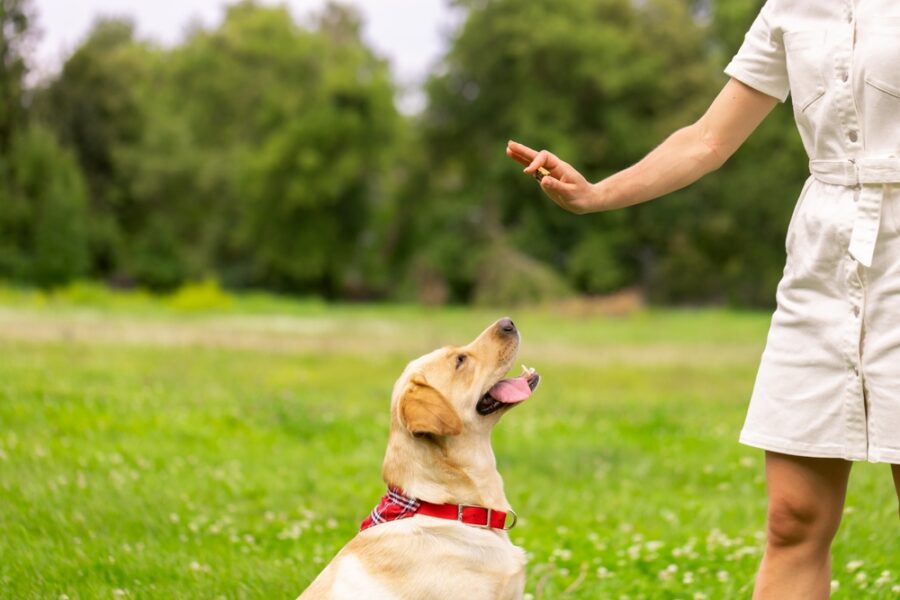
Reactivity in dogs is a common issue faced by pet parents. These pups get over-stimulated by various triggers like sights, sounds, smells, people, and other dogs, mainly because they’re afraid. They tend to lunge, bark, growl, and become so focused on the stressor that they become difficult to control. While reactive dogs may not necessarily be aggressive, they can become aggressive. Training a reactive dog can be challenging, but positive reinforcement offers an effective and humane solution to help these dogs manage their emotions.
Positive Reinforcement Training Techniques for Reactive Dogs
Positive reinforcement involves giving a dog a reward to encourage a specific behavior. You can use treats, toys, and praise to reward your dog when they exhibit behaviors you want them to repeat. For instance, when you say “Sit” and your dog sits, you offer a treat. Over time, your dog learns that certain behaviors and actions result in a reward, thereby encouraging them to continue doing those actions.
Identify Health Issues
Reactive behavior in dogs may be a sign of underlying health issues. In fact, many reactive dogs are in pain. If your dog shows reactive behavior without an apparent trigger, it’s advisable to consult a vet to rule out any medical causes.

Getting Started with Basic Commands
Teaching your dog commands like “Watch Me” and “Look at Me” helps redirect their attention and establish eye contact with you. These commands are vital because keeping a reactive dog’s attention can help them stay calm. For example, if your dog looks at you instead of focusing on another dog walking on the other side of the street, they are less likely to react to the stressor.
Practice in Safe Places
Reactive dogs feel safe and calm in trigger-free environments. For many dogs, this means that dog parks, popular walking areas, high-traffic trails, and similar places are not suitable. However, that doesn’t mean you can’t take your dog anywhere. Private dog park rentals like Sniffspot are making it easier than ever for parents of reactive dogs to let their pups run free, play, and practice training.
Set Up Reactivity Sessions
Desensitizing your dog to triggers can help them overcome their reactive behaviors. Start slowly and work with people you know and trust. For example, you could meet a friend with a dog at a quiet park. As you approach, encourage your pup to keep their attention on you and reward them with treats.
Consider a Professional Trainer
Training a reactive dog requires a lot of time and patience. If self-training hasn’t been successful, it’s worth considering consulting a certified trainer for professional guidance.
Training a reactive dog involves understanding their behavior, using positive reinforcement, and seeking professional help when necessary. With patience and consistent training, reactive behavior can be managed and improved.
For more information, visit Pet Lovers Diary.
